top of page
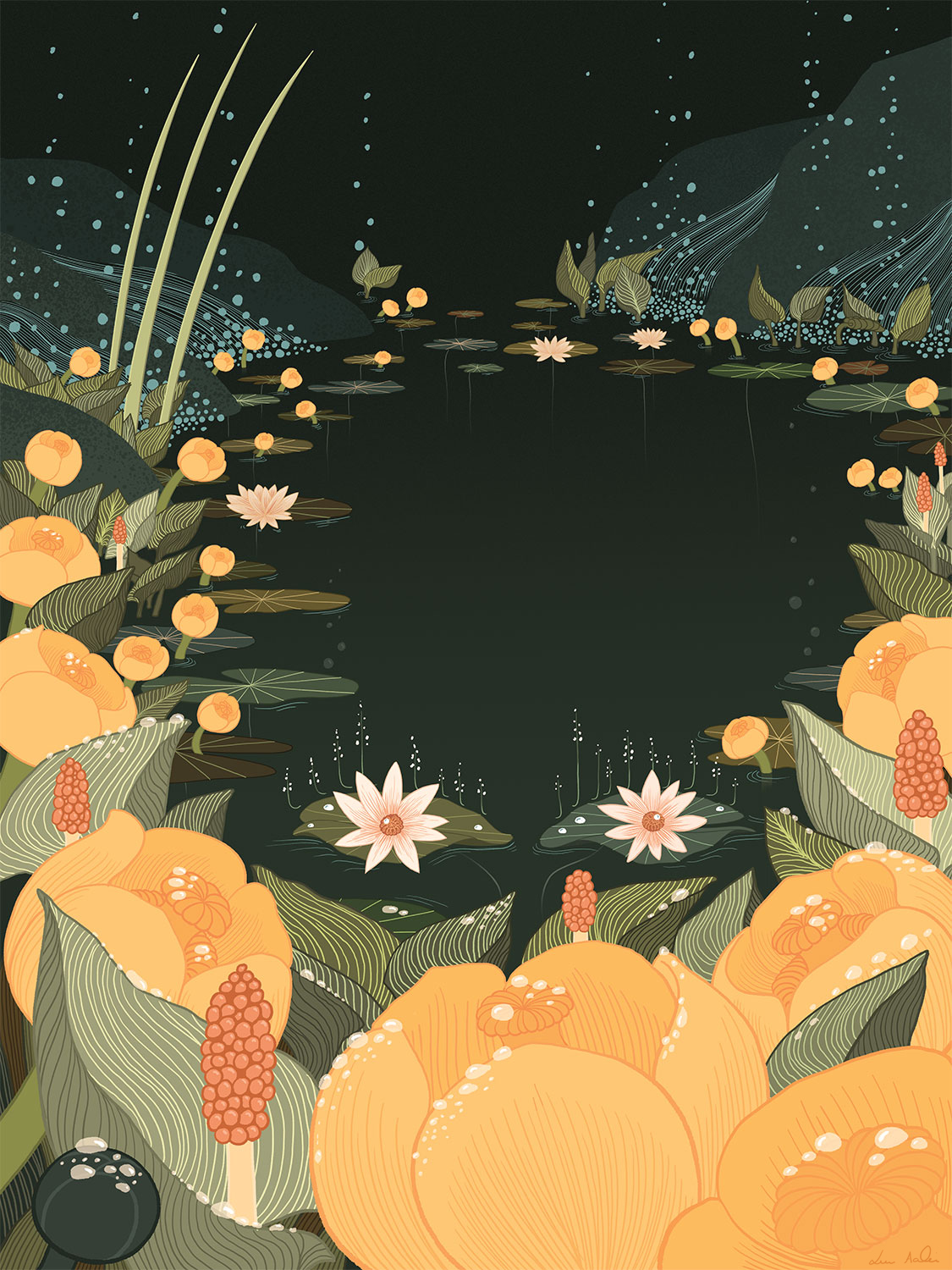
Näkki: The Spirit of Deep Dark Waters
In Finnish mythology, Näkki is a shapeshifting water spirit who dwells in still ponds and deep, dark waters. Traditionally known for luring wanderers with haunting music and beauty, Näkki embodies both danger and serenity. In this reimagining, Näkki becomes the spirit of peaceful, enchanting, undisturbed waters, appearing as water lilies, swaying plants, or gentle ripples. If one looks closely enough, a glimpse of eyes may be seen staring from their hidden underwater realm of silence and mystery.

Furtherance
A single-image visual history of the telephone, illustrating its evolution from tin can phones to modern satellite communication.

Imaginary Enemies: The Tooth Troll Trap
A piece from my personal series Imaginary Enemies, illustrating a trap designed to catch a tooth troll, a creature from Finnish folklore said to live in the mouths of candy-loving children, building homes in unbrushed teeth. The folklore is believed to be inspired by Thorbjørn Egner’s 1949 novel Karius og Baktus, where tooth decay is imagined as two tiny trolls building houses inside your teeth.
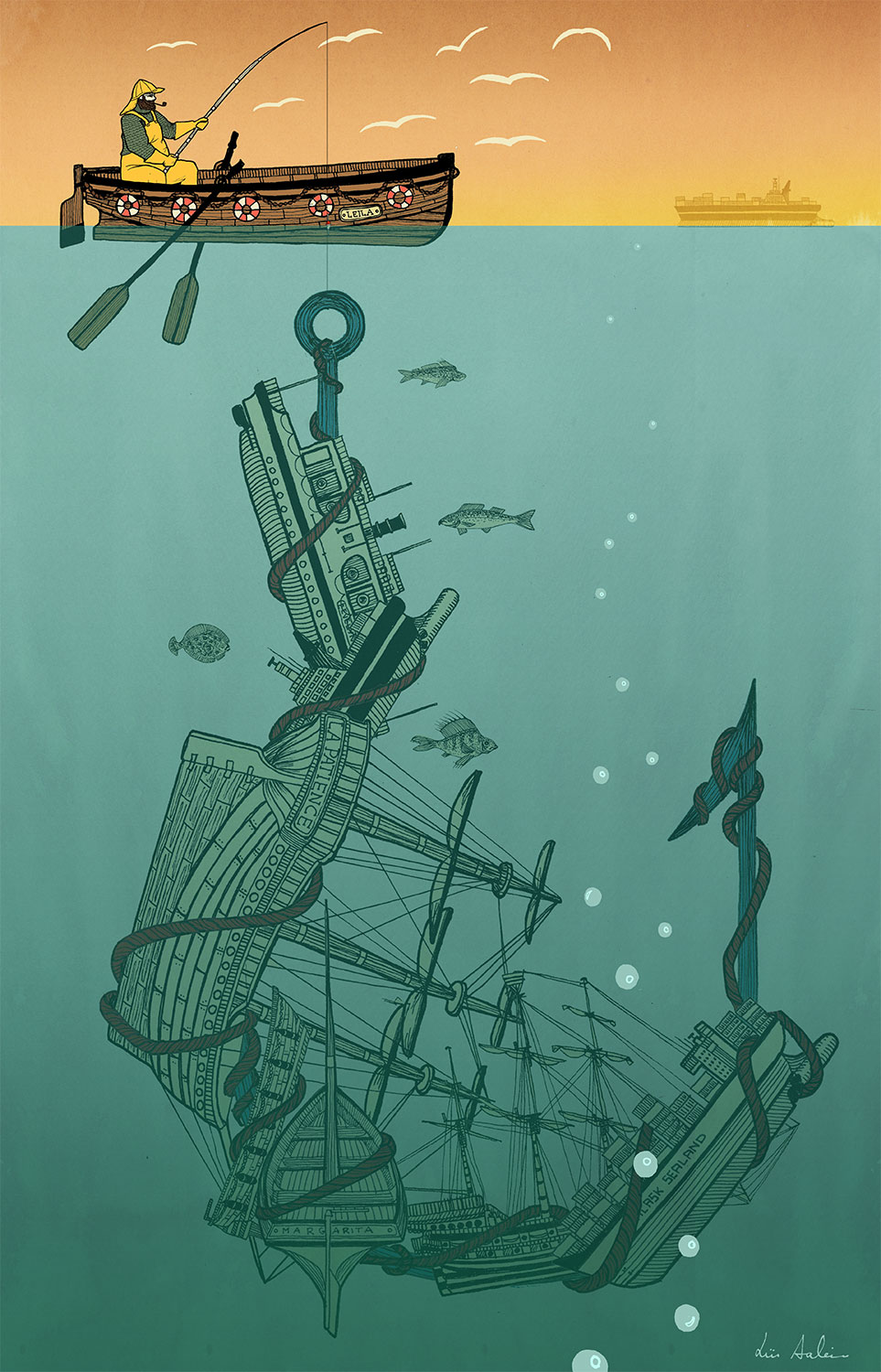
Imaginary Enemies: Kraken Bait
An illustrated trap from my personal series Imaginary Enemies. Set at calm dusk, this piece features a resolute fisherman preparing to lure the Kraken, a legendary sea monster said to dwell off the coast of Norway, feared for dragging ships and sailors into the ocean’s depths.

Talking to Machines
An illustration inspired by the Radiolab podcast episode “Talking to Machines.” The episode explores how our relationship with machines is becoming increasingly intimate and strange** as we build devices that mimic human behavior, form emotional bonds with mechanical objects, and grapple with fundamental questions: Are humans just complex machines, reducible to a series of commands? And if so, can something built this way feel? What is feeling, after all?
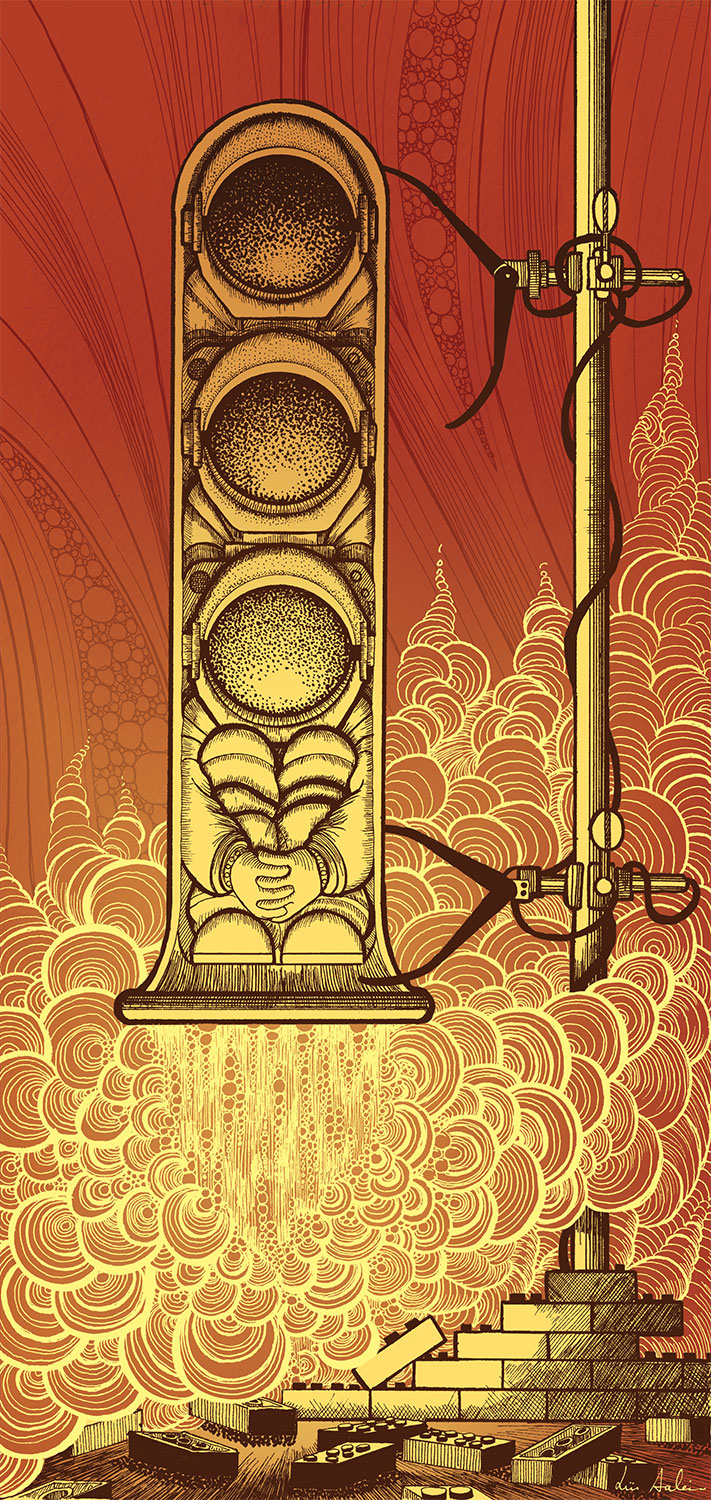
Mars Exploration
An illustration inspired by a Quirks and Quarks podcast episode on Mars exploration. The piece reflects on how even the most advanced engineering faces deep uncertainty. No matter how precise the calculations, ideas remain unproven until tested in the real world. Like all science, reaching Mars involves confronting the unknown as much as solving known problems, and it requires us to risk our sense of safety in order to satisfy our need to explore.

Snowbirds
An illustration depicting the seasonal migration of people from northern regions to warmer southern climates, escaping the harshness of winter. Like birds in formation, they take to the skies in planes, following familiar flight paths in search of sun and warmth.

Fall Readings
An illustration capturing the magical moment when we become completely absorbed in a good book. As we read, the world around us fades, replaced by the imagined environment from the text. Though the real world continues on, we are now somewhere entirely different. In this piece, beloved stories such as Twenty Thousand Leagues Under the Sea and From the Earth to the Moon by Jules Verne, The Frog Prince by the Brothers Grimm, 1984 by George Orwell, Alice in Wonderland by Lewis Carroll, and The Raven by Edgar Allan Poe are hidden within the surroundings, waiting to be discovered by those who know where to look.

Blueberry Moon
A blue moon, known astronomically as the second full moon within a calendar month, shows how its distinct hue comes not from atmospheric optics, but from blueberries, meticulously harvested and heaped inside the lunar shell by its inhabitants. Blurring the line between science and nonsense, this illustration reimagines celestial phenomena by imagining a literal cause for a visual coincidence, with a hint of the absurd.
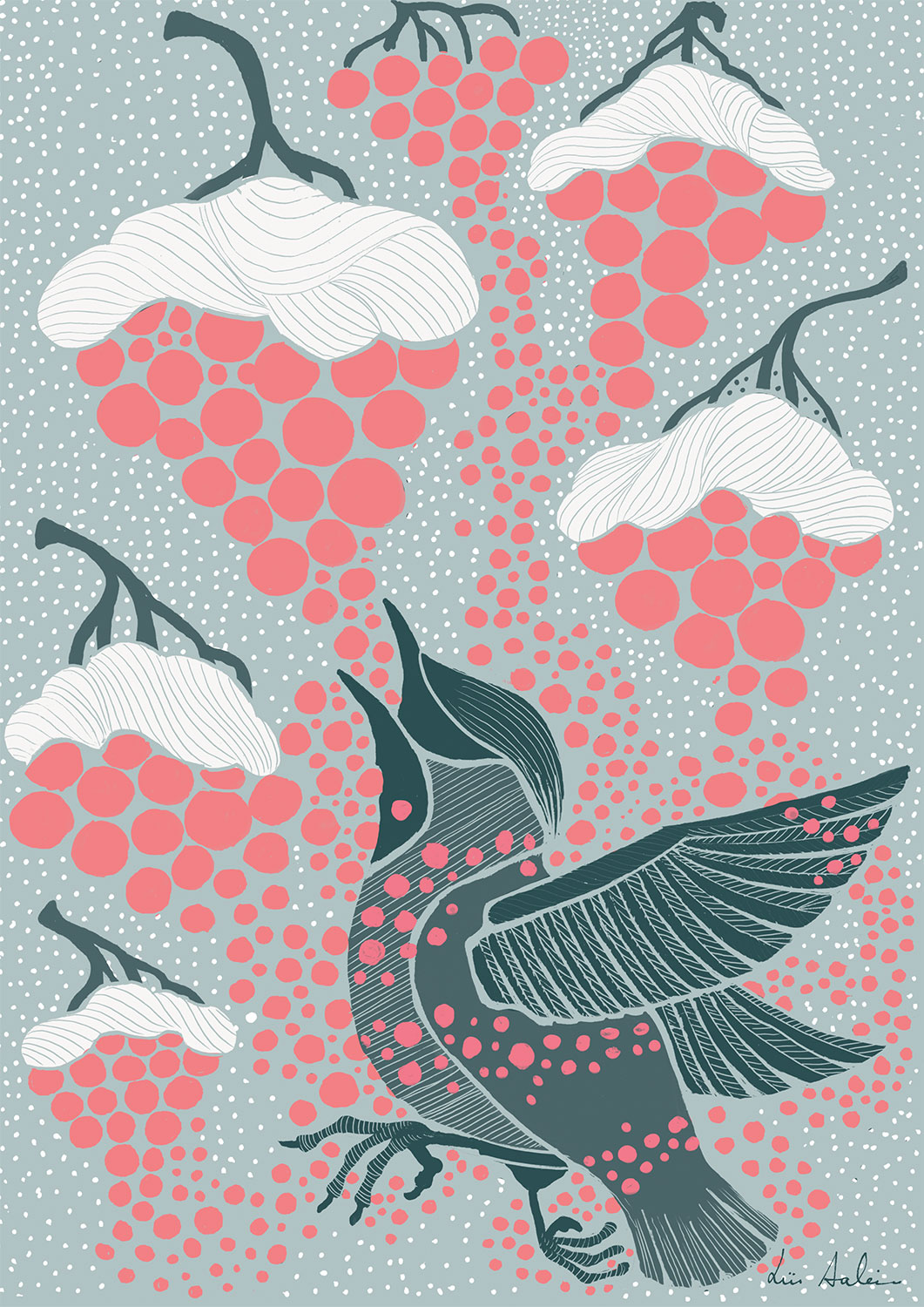
Tilhi
The Bohemian waxwing, or Tilhi, is known for its taste for fermented berries. These birds have larger-than-normal livers to help them process the alcohol from their winter diet. Illustrated here is a waxwing enjoying fermented mountain ash berries, flying around in what looks like a drunken state. It has also been speculated, however, that the bird might just be naturally lively and simply mistaken for being drunk.
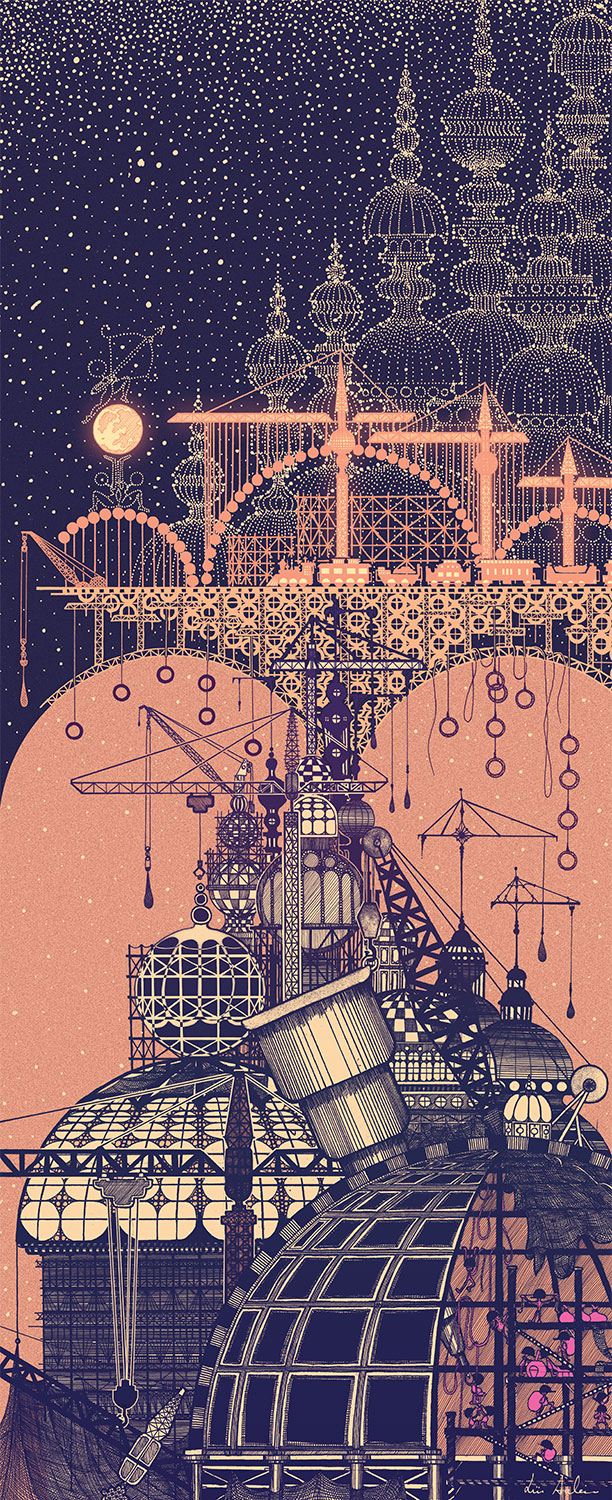
City Series: Imagining Thekla
Imagined look of Thekla, a city from Italo Calvino’s Invisible Cities, illustrated. Calvino describes Thekla as a city under perpetual construction, with buildings supported by endless scaffolding, cranes, and trestles, built according to plans derived from the stars in the night sky.
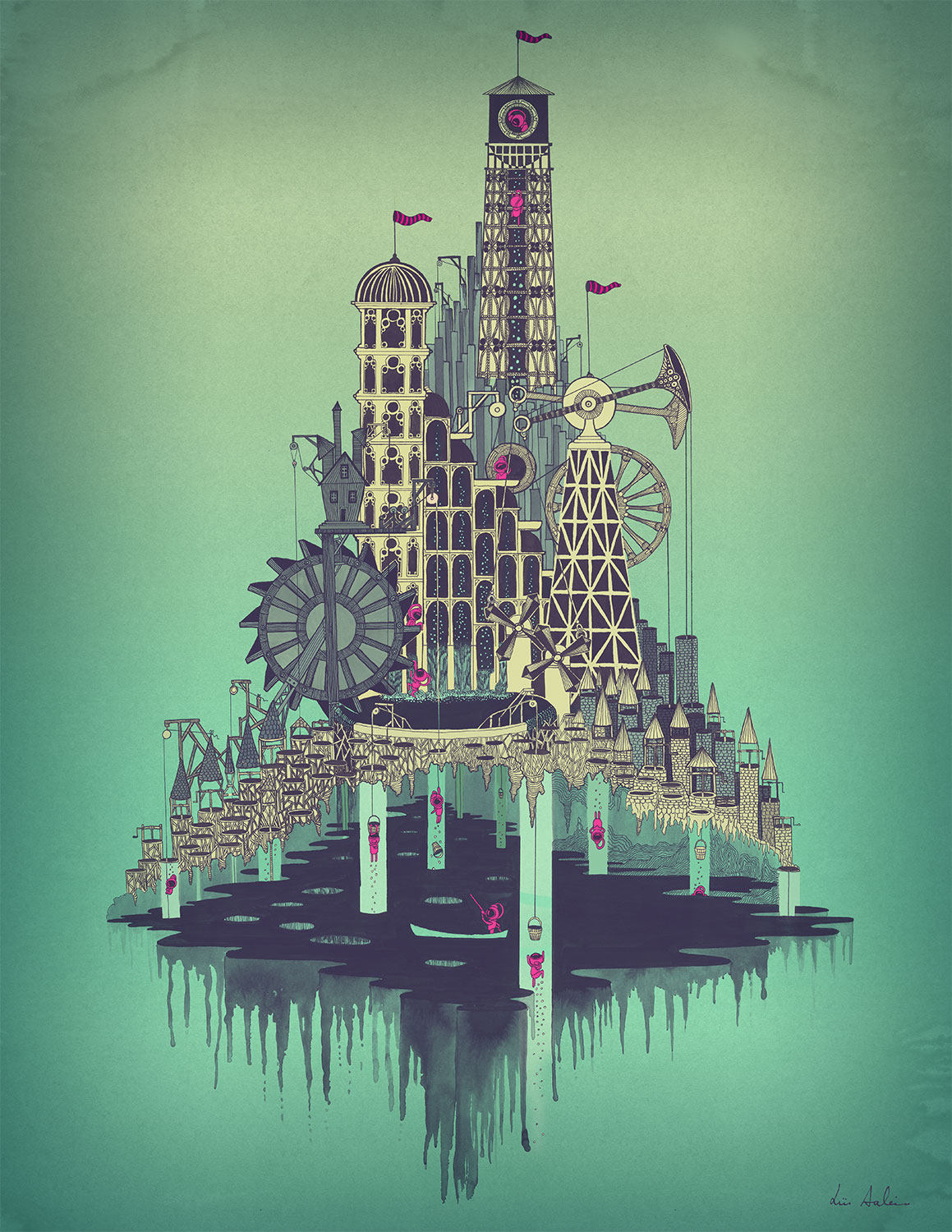
City Series: Imagining Isaura
Imagined look of Isaura, a city from Italo Calvino’s Invisible Cities, illustrated. Calvino describes Isaura as a city of thousands of wells, built entirely from various watering mechanisms over a black subterranean lake, where the gods access the world above through the city's intricate water systems.

City Series: Beersheba
Imagined look of Beersheba, a city from Italo Calvino’s Invisible Cities, illustrated. Calvino describes Beersheba as a city divided into a celestial and an infernal part, with citizens who misunderstand their true nature. They believe the celestial city is made of pure gold and rare metals, while the infernal part is dismissed as waste and everything unworthy. The citizens cherish the celestial side by accumulating jewels and rare stones, while rejecting the infernal side, calling it the broken sewer, the “fecal city,” or the “prolonged route of the human bowel.” In truth, the celestial city is composed of cast-off things, while the infernal city is crafted by the finest architects using the most expensive materials and mechanisms.
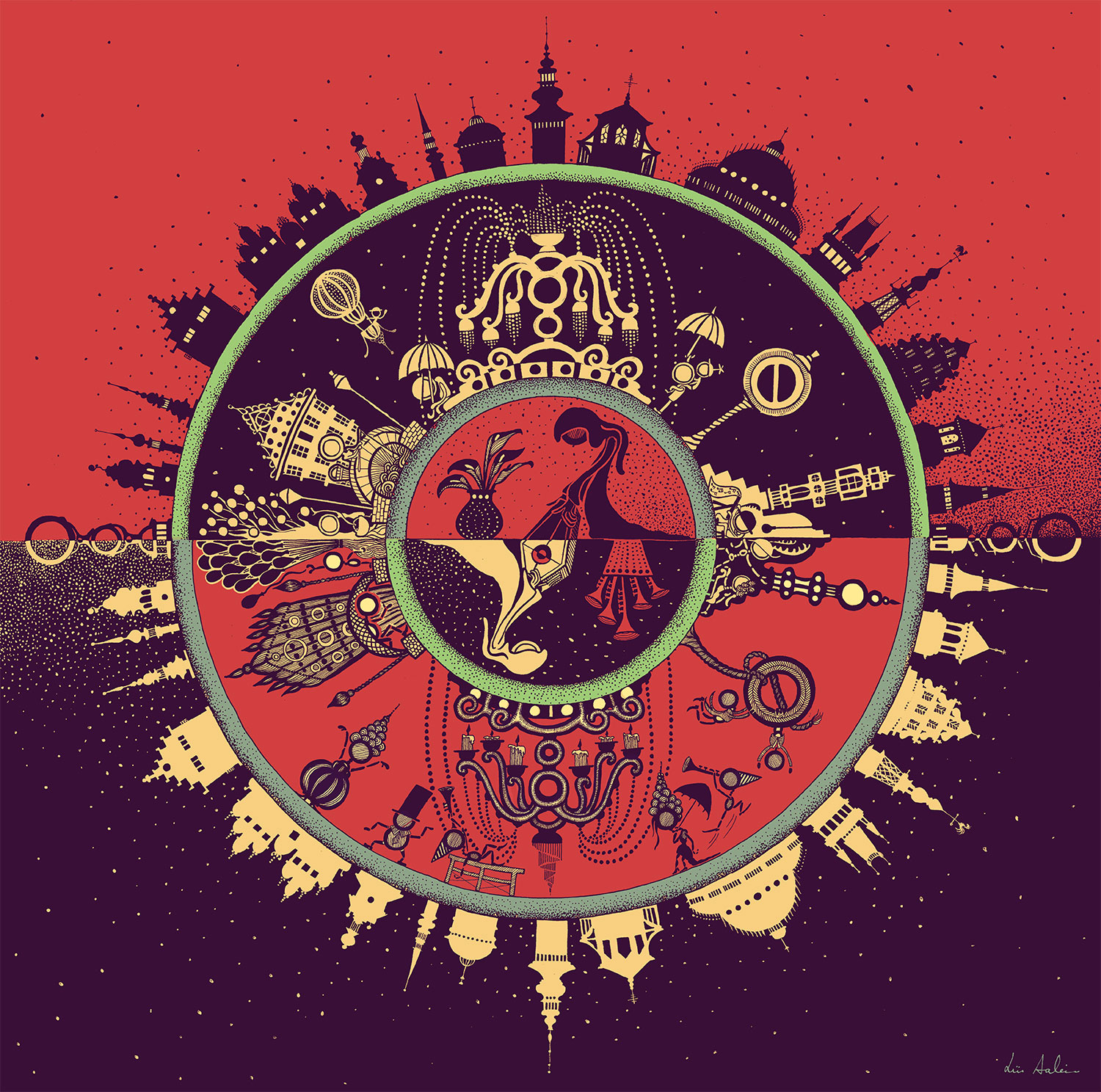
City Series: Imagining Eusapia
Imagined look of Eusapia, a city from Italo Calvino’s Invisible Cities, illustrated. Eusapia is described as a city of the living and the dead. To soften the leap from life to death, an identical underground copy was built, where the confraternity of the hooded brothers place the deceased in joyful activities. Only the confraternity has access to this lower city and reports on its innovations and changes. To keep pace, the living city of Eusapia copies the underground version, blurring the line until it becomes impossible to tell which city is original and which is the reflection.
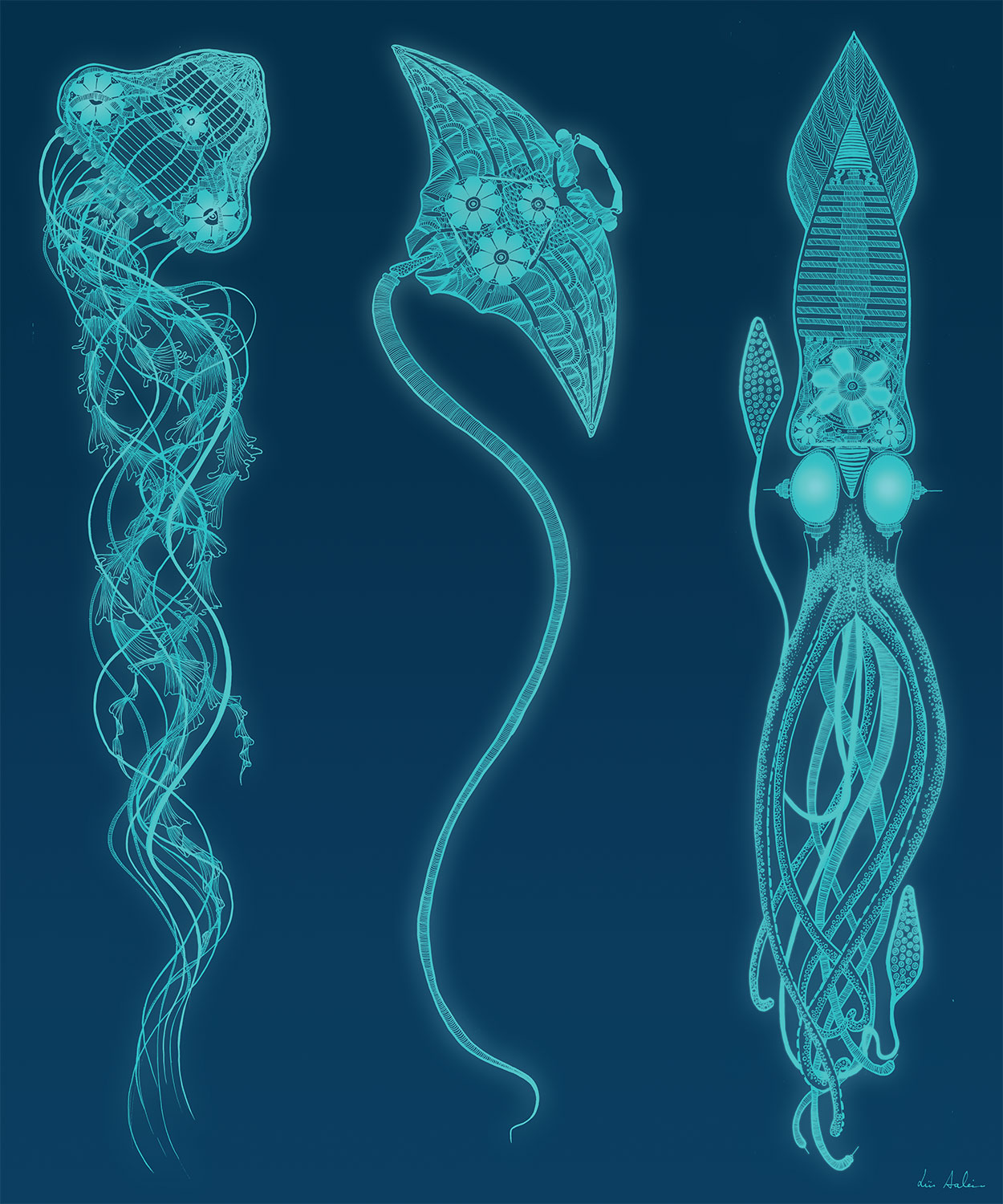
Mechanical Sealife
These snowboard designs explore the convergence of two contrasting elements: cold, intricate mechanical motors and the soft, organic forms of deep-sea creatures. They fuse engineered machinery with natural anatomy to mimic the creatures’ unique movements, such as a squid propelled like a jet engine, a jellyfish functioning as a pump, and a giant ray gracefully floating with mechanical wings. This blend reflects the dynamic energy of human motion in action sports, where advanced equipment amplifies performance and speed, seamlessly uniting rider and board.
bottom of page